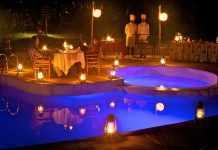Conservationists in northern Kenya celebrated the birth of a female black rhino in Sera Community Rhino Sanctuary, the first in the region for over 25 years.
The calf, born mid last month, represents the community’s hopes that the sanctuary can nurture a viable breeding population of black rhino that could eventually help repopulate other conservation areas.
Northern Rangelands Trust’s senior research and monitoring officer Antony Wandera said the rare birth demonstrates the strength of the growing community conservation movement.
The mother, named ‘Naitamany’ was translocated from Lewa Wildlife Conservancy to Sera in May 2015, as part of a project to reintroduce black rhino to Samburu.
The area was once a habitat for the now endangered species. A collaboration between the Northern Rangelands Trust, the Kenya Wildlife Service, Lewa Wildlife Conservancy and others saw Sera become the first community-owned, and one of only a handful on the continent to benefit from the project.
The birth brings the current population to 11, with 10 more expected to be translocated this year from other parks and reserves in the country.
“She was about five months pregnant when she was captured and translocated to Sera,” said Mr Wandera.
“We were worried she might lose the baby due to post translocation stress, but she settled in so well and has carried the pregnancy to term. The monitoring team were so excited to find the calf, and are planning a naming ceremony as soon as the sex can be determined.”
Edwin Kisio, the wildlife monitoring officer at Lewa, said this is ‘Naitamany’s fourth calf. She was just under six years when she had her first calf, and has an average inter calving interval (ICI) of 2.7 years.
A productive female black rhino will have an ICI of between two and three years.
Sera is a member of the Northern Rangelands Trust, an umbrella organisation that supports 33 community conservancies across northern and coastal Kenya.
Governed by a democratically elected board and run by local people, it works to transform local livelihoods through conservation and sustainable enterprises.
They have dedicated rhino monitors, who patrol the area every day recording individual animal’s movements, behaviour and health.
According to International Union for the Conservation of Nature, population of the eastern black rhino (Diceros bicornis michaeli) plummeted by 98 per cent between 1960 and 1995 primarily as a result of poaching and hunting.
However, Kenya’s population has increased from 381 since 1987 to a current estimate of 640.
Conservationists project the number to rise significantly in the near future, especially with growing pacts between State, locals and conservation organisations.























